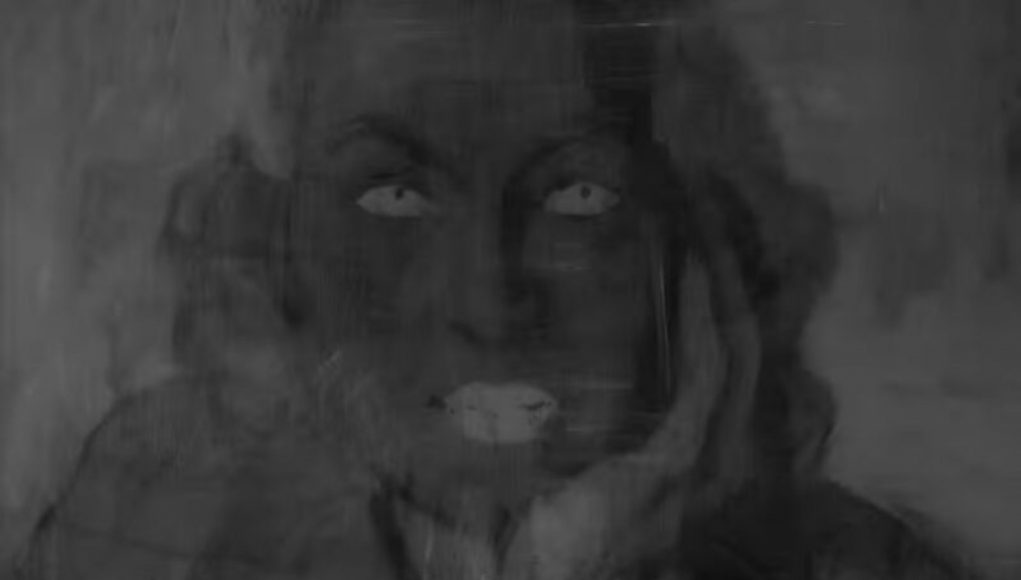Prepare to be amazed! Researchers at the Royal Museums of Fine Arts of Belgium have made a stunning discovery using infrared reflectography. They have found an earlier painted portrait of a woman hidden beneath René Magritte’s famous 1943 painting, La Cinquième Saison. And get this—it could be a portrait of his wife, Georgette! This incredible find is part of an ongoing research project that aims to scientifically explore Magritte’s painting materials and techniques. The exciting revelation will be featured in a new book called René Magritte: The Artist’s Materials, set to be published later this month by the Getty Conservation Institute in Los Angeles.
Thomas Learner, head of science at the Getty Conservation Institute, expressed his enthusiasm, stating, “Although there have been plenty of times when the technical examination of artworks has revealed a second image beneath a painting’s surface, it is always exciting when a new example is discovered. In this case, the IR reflectography image is so clear and striking that it even raises the possibility of identifying the sitter.”
But that’s not all! X-rays have become a valuable tool for analyzing and restoring precious paintings. Their higher frequency allows them to pass through the artwork without causing any harm. X-ray imaging has uncovered hidden layers and alterations in famous paintings throughout history. For instance, Vermeer’s Girl Reading a Letter at an Open Window revealed a hidden Cupid under the overpainting when subjected to X-ray analysis in 1979. Similarly, conservationists discovered a secret self-portrait by Vincent van Gogh on the back of his Head of a Peasant Woman during an X-ray analysis last year. In 2008, European scientists used synchrotron radiation to reconstruct a hidden portrait by Van Gogh. These scientific techniques not only reveal hidden secrets but also provide valuable insights into the pigments, materials, and artistic techniques used by the masters.
Advertisement
In 2020, a team of Dutch and French scientists used high-energy X-rays to unlock Rembrandt’s secret recipe for his famous impasto technique, which was believed to be lost to history. The following year, scientists used macro-X-ray fluorescence imaging to map out the distribution of elements in Jacques-Louis David’s renowned portrait of chemist Antoine Lavoisier and his wife Marie-Anne. This technique even revealed the paint used beneath the surface, creating detailed elemental maps for further study. And just recently, researchers used X-ray powder diffraction mapping and synchrotron micro X-ray analysis to study Rembrandt van Rijn’s masterpiece from 1642, The Night Watch. They made an astonishing discovery of rare traces of a compound called lead formate.
Understanding an artist’s materials and techniques is crucial for preserving their legacy. Unfortunately, René Magritte rarely discussed these aspects of his work, and much of the existing literature overlooks them. Recognizing this gap, Catherine Defeyt, a researcher at the University of Liege, and Francisca Vandepitte, Royal Museums senior curator of modern art, initiated the “Magritte On Practice” collaborative research project in 2016.
Infrared light has revealed a mystifying secret concealed beneath one of René Magritte’s celebrated surrealist works. Dating from 1943, the enigmatic painting, ‘The Rose Hive’, has been the perplexion of art critics and enthusiasts for decades.
Scientists from the University of Antwerp have revealed a remarkable new discovery, however; the use of infrared scans has unveiled a hidden portrait lurking beneath the surface of the canvas. Careful analysis of the resulting images indicates that the portrait was created almost one hundred years ago.
In the infrared scans, the portrait is revealed by its paint layer; this comprises an exact outline of a face in muted shades of cream and brown. The depiction is of a woman, of unknown origin, looking off to the right of the canvas. on the painted between her and ‘The Rose Hive’ appear to be a group of swaying trees and a line of mountains.
To art commentators, the painting is suggestive of the influence of cubism and the stylistic possibilities of surrealism in the 1940s; the novel application of infrared scanning techniques have enabled for a closer inspection and further appreciation of Magritte’s genius.
Due to the methods used and the age of the painting, there is a possibility that some of the original paint may have been partially damaged in the scanning process, although further studies will be necessary before a conclusion can be drawn.
The uncovering of the portrait has cemented the enigmatic artist’s place in the history of surrealism and as one of Belgium’s celebrated painters. It has certainly provided a fascinating insight into the creative methods of the artist and the process of painting itself.




















